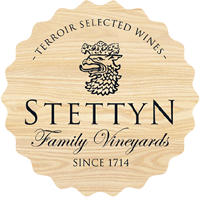The Science of Sparkling Wine: How Bubbles Happen
There’s something enchanting about sipping on a glass of sparkling wine. The effervescent bubbles and the celebratory feel make it a favorite for toasting special moments.
But have you ever wondered about the science behind those delightful bubbles?
In this blog post, we’ll take you on a journey into the fascinating world of sparkling wine, exploring both the traditional method and the innovative sparged method. Get ready to uncover the secrets of how those effervescent bubbles come to life.
The Traditional Method
The traditional method, also known as the “Champagne method” or “méthode champenoise,” is the time-tested way of crafting sparkling wine, renowned for its quality and complexity. Only sparkling wine made in the region of Champagne in France can be called champagne. In South Africa wine is made using the same method is termed Cap Classique
We use this method to craft our exceptional Deed Cap Classique Brut.

Deed Cap Classique Brut NV

The Story of Deed
The first title deed for Stettyn farm was granted to Jan Cloete and Jan Jurgen Radyn for 125 square roods (12.6 ha2) – the usual size allocated for freehold land in the region until about 1800.
It was signed by Governor Mauritz Pasques de Chavonnes at the Castle of Good Hope on 26 September 1714 and gave the partners the right to ‘besaayen, beplanten, bepoten, betimmeren en erfelyk toe houden.’
Commitment to quality is evident in your glass every time the Deed cork is popped. Let’s toast to living life passionately, unpretentiously, and in harmony!
Here's how the traditional method unfolds
The process begins with meticulous grape selection. We use Chardonnay & Pinot Noir grapes with no skin contact for our Deed Cap Classique Brut. Hand-picking ensures that only the finest grapes are used.
The harvested grapes are gently pressed to extract the juice, which then undergoes its initial fermentation in tanks, creating a base wine that is typically low in alcohol and high in acidity.
The base wine is transferred into bottles, and a mixture of yeast and sugar, called “liqueur de tirage,” is added. The bottles are sealed with crown caps.
The magic of effervescence unfolds in the second fermentation, taking place inside the bottle. The added yeast consumes sugar, generating alcohol and carbon dioxide, which remains trapped in the bottle, giving rise to the sparkling bubbles.
Once bottled, the bottles ferment and mature horizontally in cool, dark cellars for 24 months on the lees to ensure a long yeast contact time.
Bottles are carefully rotated and tilted to encourage yeast sediment to collect in the neck of the bottle. The neck is then frozen, and the frozen sediment plug is expelled in a process known as “disgorgement.”
After riddling and disgorging the wine is left in the bottle for further integration and balance.
The Sparged Method
The sparged method is a more modern and efficient approach to producing sparkling wines, known for its ability to create deliciously bubbly wines with a shorter turnaround.
We use this method for our famous Babelki – a blend of Chardonnay and Pinot Noir. The Chardonnay and Pinot Noir only get blended right before bottling and there is a very rapid touch of the grape skins to give our Babelki its beautiful colour.

Babelki

The Story of Babelki
By honouring our roots, we named this wine, Bąbelki, which means “the bubbly” in Polish. We are supporting our local community (Institute for the Blind) with a contribution of R1 from each bottle we sell.
Our Bąbelki Sparkling Rosé Brut is an elegant wine perfect for turning any occasion into a celebration of life with this vibrant sparkling wine.
How it differs from the traditional method
Similar to the traditional method, grapes are harvested and pressed to obtain the base wine. However, the initial fermentation occurs in stainless steel tanks rather than individual bottles.
After the first fermentation, the base wine is transferred to a pressurized tank, where sugar and yeast are introduced to initiate the second fermentation. The carbon dioxide produced during this process is captured and dissolves into the wine, creating those signature bubbles.
The wine undergoes filtration to remove yeast sediment, and it is then bottled under pressure to preserve the bubbles.
In the sparged method, the aging process is notably shorter, typically only a few months, as compared to several years in the traditional method.
Final Thoughts on The Science of Sparkling Wine
Whether crafted through the traditional method or the innovative sparged method, sparkling wines continue to be the epitome of celebration and luxury. The science behind creating those mesmerizing bubbles is a complex and captivating journey, with each method offering unique results. The traditional method is celebrated for its elegance and depth, while the sparged method provides a fresh and fruity alternative.
The next time you raise a glass of sparkling wine, you can appreciate the art and science that goes into crafting this effervescent delight. Cheers to the magic of bubbles!


